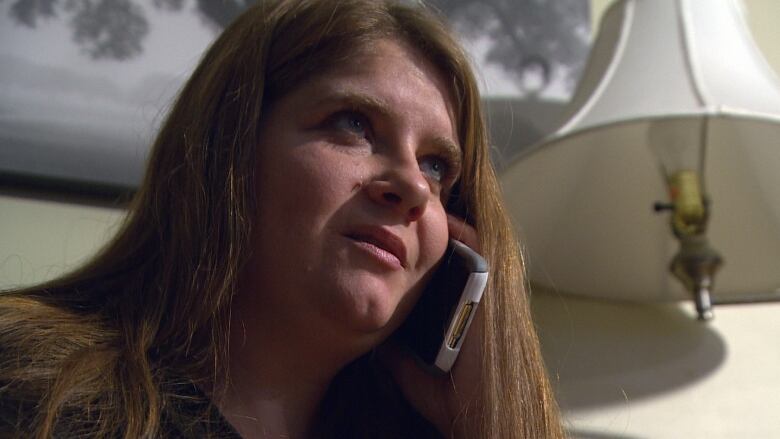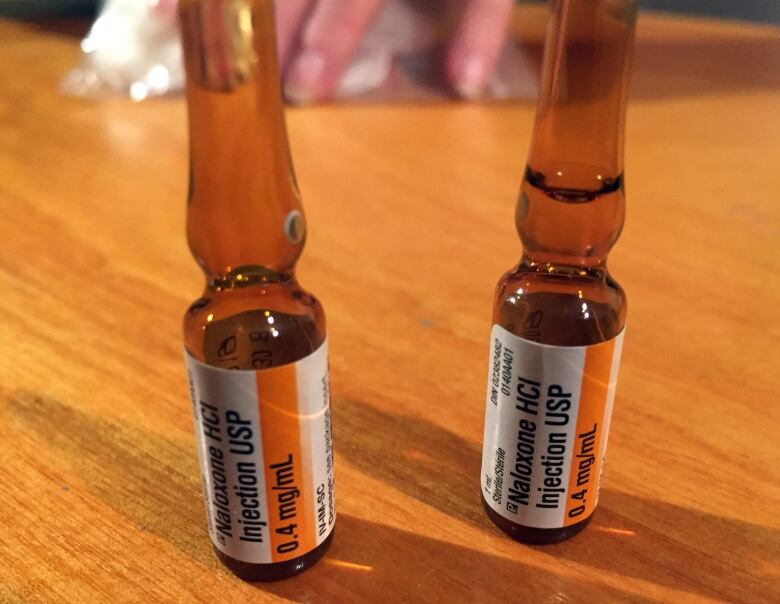'People are dying': Life-saving opioid antidote hard to find
Naloxone 'should be wherever you think somebody might overdose,' such as high schools, nightclubs, doctor says

Sherry Isaac is a mother on a mission.
Her 26-year-old daughter has struggled with drug addiction for half her life. She has overdosed ninetimes in 13 years, including once in Isaac's basement.
Witnessing her daughter's crisishas turned Isaac into an activist, a one-woman force who spends her days searching for one drug: naloxone, an antidote that reverses the effects of an opioidoverdose.
"This drug has the potential to save a life, not just my child but so many children," she said.
Isaac has called or visited most of the pharmacies in Winnipeg. She's phoned dozens more just outside of the city. Sheasks the same question over and over again:"Do you carry naloxone?"
Most of the drugstores don't.
"I am not sure if it is about supply and demand or people wanting to stick their heads in the sand, and perhaps drugstores don't want addicts coming into their pharmacies requesting this because the stigma and the shame behind addiction is just disgusting,"she said.
'Problem all across the country'
Access to naloxone is a problem in other cities, too.
Dr. David Juurlink, a drug safety researcher at Toronto's Sunnybrook Hospital, went on his own search for naloxone in pharmacies. When he couldn't find any, he took to Twitter.
Went to FOUR Toronto pharmacies this morning looking for a naloxone kit. None had it or offered to get it. Lots of this though pic.twitter.com/QUGuxGUE5H
—@DavidJuurlink"I mean people are dying,"he said. "Dozens every week.All them, in theory, revivable by the early administration of naloxone."
Opioidsinclude prescribed painkillers such asfentanylandOxyContin, which are also sold on the streets, as well as illicit drugs like heroin.
Health Minister JanePhilpotthascalledtheincrease inopioidoverdosesa "national health crisis."
Between January and October, 622 people died of unintentional overdose from illicit drugs in B.C., the coroner's office said.
Policein Ontarioestimate there were 700 deadlyopioid overdoses in the province last year abigger killer than car crashes.
- Fentanyldeaths on the rise in Ontario
- 'They brought me back again': Addicts who OD revived on the spot
In June, the Ontario government announced naloxone would beavailable free without a prescriptionat pharmacies across the province.
But Juurlink says so far most pharmacies aren't stocking it.
"I think what I am alarmed most byis the sheer number of them that seem not to have it," he said. "You can understand why the occasional pharmacy here or there wouldn't have it, but really, this is a problem all across the country in every province in every city and every town."

Dr. Aaron Orkin, an emergency room physician at Mount Sinai Hospital in downtown Toronto, has noticed the problem firsthand.
"Most corner drugstores you walk in and you say, 'I need a naloxone kit.' They will give you a little bit of a sideways stare and not be sure of what you are even talking about."
This drug has the potential to save a life, not just my child but so many children.- Sherry Isaac
Besides Ontario, Alberta also providesnaloxonefor freethrough pharmacies and emergency services, and B.C. and Quebec doso for high-risk individuals. The kits retail for around $35.
RCMPofficers and first responders in Manitoba are now equipped with the life-saving kits.
Newfoundland and Labradorand Nova Scotia have set up targeted distribution programs through public health agencies. There are also training programs that teach how to use the naloxone kits.
'Naloxonesaves lives'
Juurlink argues distribution through pharmacies and public health agencies isn't enough to battle the epidemic.
"Naloxone saves lives, it saves them quickly and it should be wherever you think somebody might overdose," he said.
"It should be in nightclubs, it should be in high schools, it should be in gas stations, it should be in corner stores and it should be free or available at very little cost."

Naloxone has been around since the 1970s. It's safe and cheap,Juurlink says.
He says the opioid crisis was fuelled in part by doctors over-prescribingthe potent painkillers, much of which was paid for by public health plans. Those same governments, he says,should find the money to make naloxone widely available.
"I mean the alternative ... is not finding the money and people will continue to lose their sons and daughters and brothers and sisters."
- Vancouver firefighters race to revive fentanyl addicts
- Fentanyl overdose in B.C. rehab centre prompts coroner's inquest
- B.C. government fails to deliver fentanyl crisis fix
Back in Winnipeg,Sherry Isaac is optimistic.
She got a text the other day from her daughter. The message said she's been drug-free for nine days.
But Isaac is also a realist. She keeps a naloxone kit on hand, hoping she'll never have to use it.












_(720p).jpg)


 OFFICIAL HD MUSIC VIDEO.jpg)
.jpg)



























































































